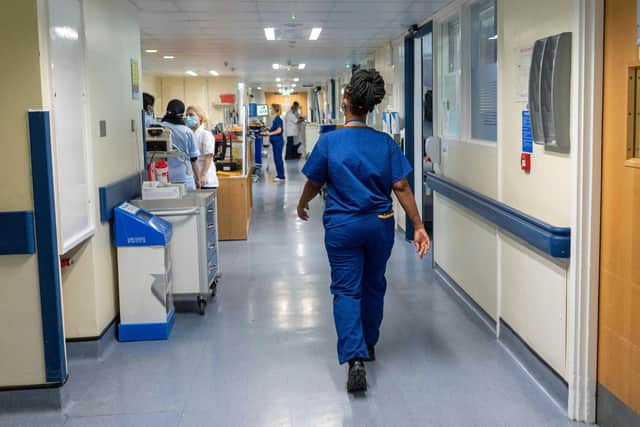Technology can help bridge inequalities in healthcare suffered by women - Natalie Duffield
Research shows women spend a greater proportion of their lives in ill health and disability compared with men and are under-represented in clinical trials. In addition, not enough focus has been placed on women-specific topics like miscarriage, endometriosis or menopause.
Announcing the strategy, the government promised to “right these wrongs”, improve the way in which the health and care system listens to female voices and boost health outcomes for women and girls.
Advertisement
Hide AdAdvertisement
Hide AdThe problem is particularly acute in the UK, where we reputedly have the greatest gender gap in the G20. The Royal College of Obstetricians and Gynaecologists has warned that women cannot always find accurate information; the NHS is largely an intervention service, not a prevention service; opportunities are frequently missed to empower girls and women and many women’s healthcare services are fragmented and difficult to access.


There are plenty of other examples of this gap in action.
Addressing the gender gap could add “years to life and life to years” and potentially boost the global economy by $1 trillion by 2040, according to McKinsey Health Institute.
In England, the government has put digital and data at the heart of its strategy for women. Its 10-year ambitions include greater use of technologies to empower women while giving fair access to clinically safe technologies, whether diagnostic, therapeutic or preventive.
With the will, there is much that can be done here and now, without having to wait another decade for progress.
Advertisement
Hide AdAdvertisement
Hide AdWe have developed and deployed digital health services that are designed to break down barriers between people and the places where healthcare is traditionally delivered and help change the way care is given and received.
Take our gestational diabetes service, which is offered to expectant mothers across a number of NHS trusts in England. The condition can cause problems during pregnancy and after birth but risks can be reduced if detected early and well managed. Inhealthcare empowers women to self manage their condition at home and helps nurses give the right treatment at the right time.
According to the British Heart Foundation, women are dying needlessly from heart attacks in the UK, or not making as good a recovery as they could, because they do not receive the same care and treatment as men. We have partnered with FibriCheck, a medically certified app for heart health, to help combat cardiovascular disease. By scaling up preventative checks, NHS organisations can transform detection and condition management for people with atrial fibrillation, high blood pressure and high cholesterol, the main causes of the disease.
These are just some examples of services that aim to improve outcomes for women. They deliver care beyond traditional healthcare settings. They are available and scalable. They generate data that can plug gaps and better inform the allocation of NHS funding to address the gender inequalities that exist so starkly. And they show how digital health can open up access to health services.
Natalie Duffield is sales and marketing director at North Yorkshire-based Inhealthcare.
Comment Guidelines
National World encourages reader discussion on our stories. User feedback, insights and back-and-forth exchanges add a rich layer of context to reporting. Please review our Community Guidelines before commenting.